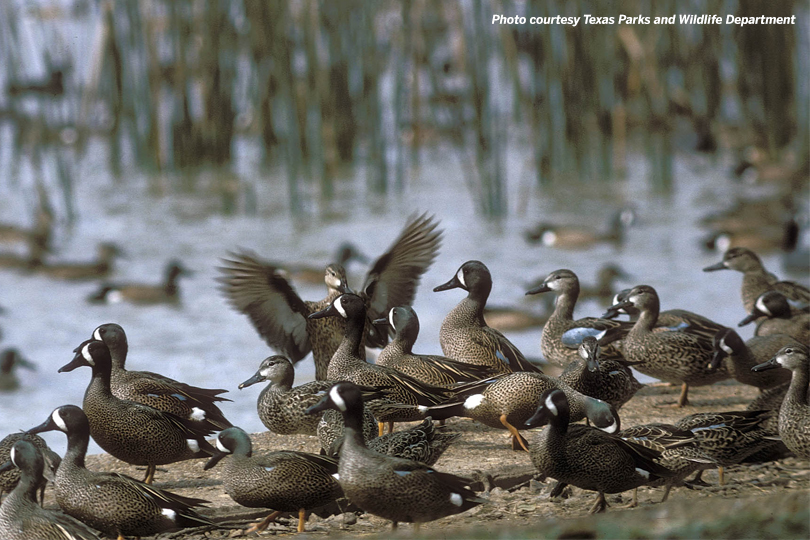By Jessica Domel
Multimedia Reporter
Teal hunting season in Texas opens Sept. 9, and the Texas Parks and Wildlife Department (TPWD) is forecasting a good year for some hunters and a tough year for others.
“Obviously, local habitat plays a huge role. As we speak, for the majority of the state, we are in extreme drought. Fresh surface water is very limited,” Kevin Kraai, TPWD waterfowl program leader, said. “Our key early teal season region of the state is our Gulf Coast from the rice prairies down to the coastal marsh. There’s essentially no natural water on the landscape that is fresh.”
When it comes to surface water right now, Kraai said the Texas Panhandle and High Plains are the bright spot thanks to precipitation in May.
“Those playa basins, a good percentage of those, are holding water right now,” he said. “Those that have access up here will probably have a better chance. We’ll probably have a bump in population here this fall.”
Of the estimated 27,000 teal hunters in Texas that hunt early season teal, only about 1-2% are in the High Plains.
“The reality of the Panhandle is it’s all private land and posted. You have to get access to that,” Kraai said. “There’s just not a very high percentage of blue-winged teal hunters in the Panhandle.”
The forecast could change quickly, Kraai warns, if any part of the state sees more rainfall or the drought worsens.
“We’re all kind of hoping to get a bunch of rain and change this forecast, but we also don’t want anything coming in that’s too violent like we’ve experienced in the past,” Kraai said.
Waterfowl have the ability to detect fresh water on the landscape and will go where habitat is best.
“If it rains overnight, and there’s fresh pond water on the surface of the land, within a couple of days, teal can find that for sure,” Kraai said.
While the availability of fresh water on the landscape does play a role in whether or not hunters will see teal this fall, the most important part of the equation is teal populations.
“Although blue-winged teal are down 19% from the previous year, they’re still at 5.2 million, which is a couple of percentage points above the long-term average,” Kraai said. “So realistically, the blue-winged teal population is doing very, very well. Blue-winged teal make up the vast majority of our harvest during the early teal season.”
The decline in blue-winged teal numbers may be attributed to extreme drought in Canada last summer.
“The core breeding area for the blue-winged teal is southern Canada and eastern North and South Dakota,” Kraai said. “Eastern North and South Dakota saw much improved habitat conditions from the previous years, and so there was good production efforts in those parts, but most of Canada saw extreme drought this past summer, which is the driver behind the decline.”
The green-winged teal population increased considerably.
“Green-winged teal, as the season progresses from north to south, begin to show up and start to play a little bit more of a role in our bags, but the reality is, it’s blue-winged teal that drive that machine,” he said.
Kraai did not have a population status for cinnamon teal. They’re mostly found in the far western United States. Although hunters in Texas may count cinnamon teal as part of their daily bag, there are few encounters with cinnamon teal in Texas.
There are no regulation changes for teal hunters this year.
Teal hunting season is Sept. 9-24. Teal may also be hunted in duck season.
The daily bag limit for early teal is six birds. The possession limit is three times the daily bag.
Full Texas hunting regulations are available in the Outdoor Annual.


Leave A Comment